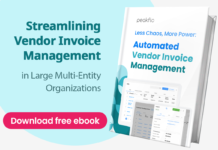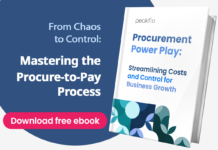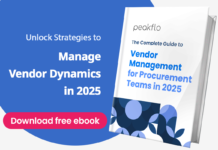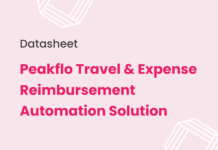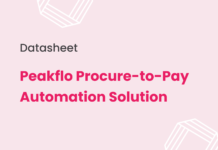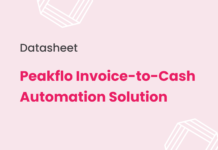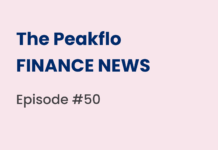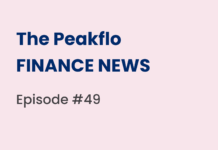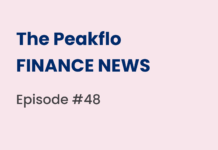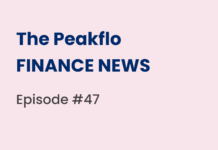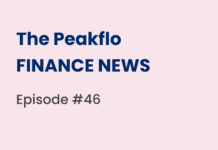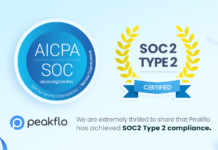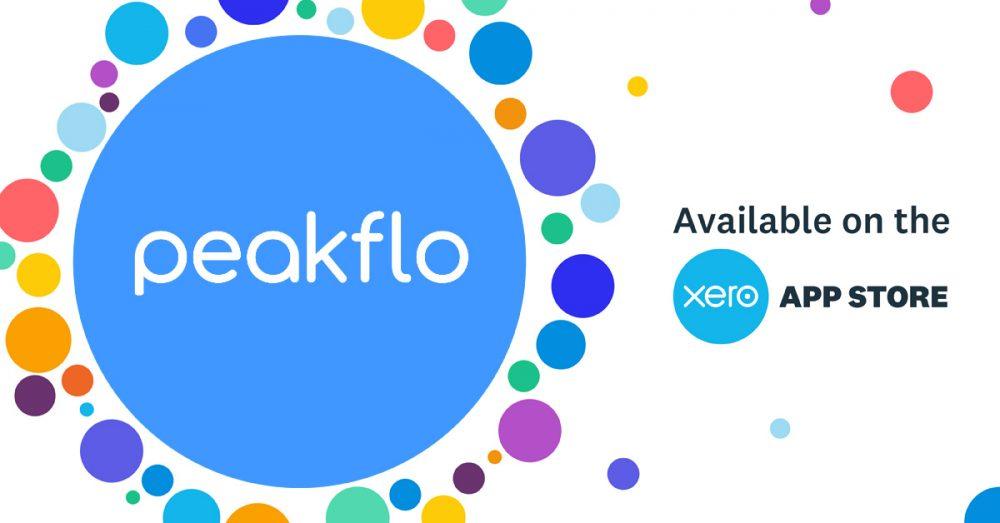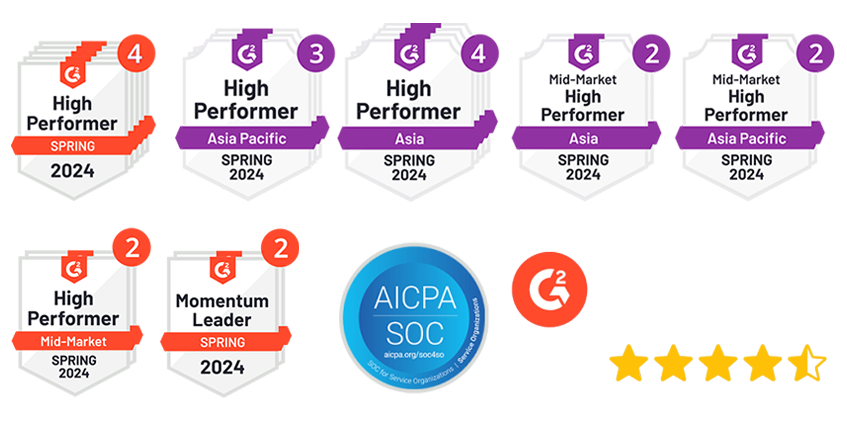A comprehensive procurement policy is more than just a set of rules—it is your organization’s roadmap for managing procurement effectively. It ensures that every vendor decision, purchase order, and negotiation aligns with your goals and values.
Suppose your team needs to find a vendor for a high-stakes project. Without clear guidelines, evaluations are all over the place, deadlines are missed, and costs quickly get out of hand. Sound familiar? A strong procurement policy is designed to prevent this kind of chaos.
In this blog, we will walk you through how to create a best practice procurement policy that simplifies processes, minimizes risks, and strengthens vendor partnerships. Whether you are building from scratch or updating your approach, you will find practical steps and insights to make procurement smoother, smarter, and more effective.
What is a Procurement Policy?
A procurement policy is a document that explains how your organization buys goods and services. It sets clear rules for working with vendors, managing budgets, and completing purchases. Simply put, it is a guide that helps your team make smart and consistent decisions.
Without a policy, the entire procure-to-pay (P2P) cycle can get confusing. Teams may choose vendors based on personal preferences or skip important steps. This can lead to higher costs, delays, or even legal issues. A procurement policy prevents these problems by creating a clear, fair, and organized system.
Key parts of a procurement policy

- Vendor Selection: Guidelines for choosing reliable vendors based on price, quality, and reputation.
- Approval Steps: A clear process for getting purchases approved to avoid delays.
- Compliance Rules: Ensures purchases follow legal and ethical standards.
- Record-Keeping: Instructions for tracking and storing procurement information.
Why Do You Need a Procurement Strategy?
A procurement strategy is a detailed plan for how your organization manages buying decisions. It focuses on making the best use of resources while meeting your long-term goals. It is a guide to help your team make smart, well-informed choices.
While a procurement policy explains the rules, the strategy ensures those rules are followed practically. It connects everyday purchasing decisions with larger business objectives.
Here is why a procurement strategy is essential:
- Saving Money: A strategy that helps you find better deals and avoid unnecessary spending. This could include buying in bulk or choosing vendors with competitive prices.
- Reducing Risks: It prepares you for unexpected problems, like price changes or delayed shipments. A clear strategy helps your team respond quickly to challenges.
- Improving Quality: You can focus on vendors that meet your standards for quality and reliability. A consistent approach ensures you get the best value for your money.
- Reaching Business Goals: Every purchase can support important goals, like reducing waste or staying within budget. A strategy keeps these goals at the center of your decisions.
- Building Strong Vendor Relationships: A thoughtful strategy creates trust and vendor collaboration. This can lead to better deals and smoother operations over time.
For example, your strategy might include working with local vendors to cut down on delivery times. Or it might prioritize suppliers who use sustainable materials to align with your company’s values. These choices do not just meet short-term needs—they also strengthen your operations for the future.
Best Practices for Creating a Successful Procurement Strategy
1. Build a Strong Procurement Management Framework
Before fixing inefficiencies in your procurement process, you need a solid plan. This plan is called a procurement management framework. It acts as a guide for your organization’s purchasing activities. If you do not have one yet or your current framework is outdated, start by reviewing how procurement works in your company.
A strong procurement framework should include clear steps for:
- Reviewing and approving purchase requests
- Building and managing relationships with vendors
- Negotiating terms and agreements effectively
- Matching invoices, orders, and deliveries accurately
- Handling payments on time and without errors
- Keeping records that are easy to access and review
- Hiring skilled procurement professionals
- Training employees on products and processes
Building this framework takes time. You will need to study your current processes, map out every step, and create clear instructions for your team. This is not a task you can finish overnight, but it is a vital part of improving your procurement system.
To help, we have created a detailed guide that covers everything you need to know. Remember, skipping this step could lead to mistakes, inefficiencies, and higher costs. A well-structured procurement framework is the foundation of a successful process.
2. Optimize Your Inventory
Managing inventory is a crucial part of procurement that many businesses overlook. Balancing costs, profits, and stock levels can feel overwhelming, but it is essential to get it right.
Keeping your inventory at the right levels is one of the best ways to improve procurement. You need to plan how much to order carefully. This reduces waste while still meeting customer needs. It is all about finding the right balance.
Holding on to inventory for too long can hurt your profits. Storage costs, taxes, insurance, and the risk of products becoming outdated all add up. To avoid these issues, your inventory should move smoothly and regularly.
3. Strengthen Supplier Relationships
Building strong relationships with suppliers is vital for your business to succeed. Suppliers play a key role in delivering products and maintaining operations.
You need a clear strategy to ensure vendors deliver high-quality products on time and at a fair price. Understanding your suppliers better allows you to engage with them in ways that benefit both sides.
Here is how to work with suppliers strategically:
- Communicate Clearly: Ensure suppliers understand what you need. Send detailed orders and confirm receipt of invoices.
- Set Clear Expectations: Use your market knowledge to set high standards for vendor performance.
- Track Performance Regularly: Check the quality and reliability of your vendors’ deliveries. This ensures you get the best value for your money.
- Pay on Time: Paying promptly shows your suppliers that you value their work. This can encourage them to prioritize your business.
- Know the Market: Stay aware of how your suppliers compare to their competitors. This helps you make the best decisions for your business.
- Provide Self-Service Tools: Let vendors submit invoices, proposals, or contracts using a portal. This will improve communication and reduce delays.
- Use Vendor Dashboards: Track how suppliers perform against contracts. Dashboards can help you spot problems, compare vendors, and make changes when necessary.
4. Use Digital Contract Management
Switching to digital contract management makes this process easier and safer. A cloud-based system stores your documents in one place, where they are easy to find and secure. It also reduces risks by offering better control and visibility. These features are key to building a best practice procurement policy that prioritizes efficiency.
Today, there are many software options for digital contract management. Each one offers unique tools to fit different business needs. Look for software that supports automated alerts, version tracking, and detailed audit logs. These tools help streamline your contract workflows and save your team time. Adopting digital contract management is not just about convenience—it is a way to protect your business and reduce costs.
Managing contracts is one of the most important steps in procurement. From tracking purchase orders to handling invoices and reviews, every step requires accuracy. Relying on paper-based systems can lead to delays and mistakes.
5. Automate Your Procurement
Manual procurement can be slow and costly. Mistakes from manual work can also hurt your business. Automation solves these problems, helping your team work faster and avoid errors.
Automation removes repetitive tasks, freeing your team to focus on more important work. It also makes sure key steps, like approvals and payments, are completed on time. This is a key part of any best practice procurement policy. Here are three key areas where automation helps:
- Payment Reconciliation
Reconciliation is time-consuming when done manually. Automation checks your payment records against sales data in seconds. It ensures everything matches, saves time, and secures cash flow.
AP automation speeds up invoice processing and purchase orders. AI tools handle tasks like coding invoices and matching them with purchase orders. Systems like optical character recognition (OCR) turn messy data into clear, usable information, reducing errors and storing everything digitally.
- Invoicing
Automating invoicing makes processing fast and accurate. It handles price matching, approvals, and purchase orders with ease. Automation also ensures payments are on time, avoiding late fees and keeping vendors happy.
6. Integrate Procurement Processes
Procurement can slow down when workflows are disconnected, or tasks require too much manual effort. Even if you automate some parts, gaps may remain. Why? Because teams often transfer data manually between systems, typically using spreadsheets.
When done manually, tasks like budget approvals, quality checks, and dispatch requests are prone to delays. These bottlenecks waste time and increase errors, which can hurt efficiency and raise costs.
Integrating your procurement systems solves these problems. It connects all workflows, allowing data to move seamlessly from one step to the next. This reduces delays, eliminates repetitive manual work, and streamlines your process.
Integrated systems also speed up quality checks and verifications. They minimize reliance on spreadsheets and reduce human errors. By creating a connected workflow, your procurement process becomes smoother and more effective. This is a key part of building a best practice procurement policy that saves time and resources.
7. Prioritize Transparency in Sourcing
Transparency in procurement means making every step clear and easy to follow. It builds trust and helps your team make better decisions. Here is how you can ensure transparency:
- Create strategic policies: Design rules that focus on getting the best value. Share these policies with everyone in your organization.
- Document every step: Keep detailed records for all stages of the process. Track requests, approvals, payments, and deliveries. This makes it easier to identify problems and improve processes.
- Update your supplier list: Regularly review and revise your list of trusted vendors. Look for new suppliers who might offer better deals or services.
- Draft clear contracts: Create contracts that cover all details, including delivery timelines, costs, and penalties. Store these digitally for quick access.
- Conduct regular audits: Check how well vendors are performing. This helps ensure they meet your standards and offer competitive rates.
Without transparency, it is harder to track performance, spot inefficiencies, or build trust with vendors. Taking these steps will make your procurement system stronger and more reliable.
A centralized system gives your team insights to act faster. You can avoid double payments, reduce delays, and secure discounts. It also helps you monitor spending habits and cut down on unauthorized purchases, often called maverick spending.
8. Build Data Dashboards
Data dashboards make your procurement data easier to understand and use. Without them, teams waste time piecing together information from different sources. This leads to confusion and slows down decision-making.
Dashboards solve this by presenting real-time data in one clear and simple format. They help your team track spending, compare budgets, and monitor vendor performance quickly. Dashboards also show price trends, helping you respond to changes faster.
When your team has access to clear data, collaboration becomes easier. Everyone works with the same information, making decisions faster and more aligned.
Adding dashboards to your procurement workflow is not just about saving time. It is about using data strategically. Dashboards give you insights to help you make better decisions and improve sourcing efficiency.
9. Think Beyond Cost Reduction
Cutting costs is important, but focusing only on cost savings can hold your business back. It limits your ability to respond to market changes and growing demands. Instead, adopt a strategic approach to procurement. Use your supply chain as a tool to stay competitive and support business growth.
You can build better relationships with vendors when you clearly understand your sourcing process. These relationships can lead to faster deliveries, higher-quality services, and more efficiency. Automating repetitive tasks also helps. It gives your team more time to focus on meaningful work that adds value to your organization.
Strategic procurement also reduces waste. This frees up resources that you can invest in innovation and long-term growth. Instead of saving money, you will create opportunities to improve processes and grow your business.
10. Prioritize Corporate Responsibility
Customers today care about where products come from and how they are made. They want to support businesses that prioritize ethical and sustainable practices. If your supply chain ignores these factors, you risk losing customers and harming your brand’s reputation.
Ensuring social responsibility is not always simple. Supply chains are complex; even if your vendors meet your standards, their partners might not. This is why it is important to have full visibility into your entire supply chain.
When your procurement process includes responsible sourcing, you show customers that you care about more than profits. It builds trust, strengthens loyalty, and positions your brand as ethical and forward-thinking. A best practice procurement policy should always focus on sustainability and accountability at every level.
11. Minimize Risks in Procurement
Procurement involves risks, from supply chain disruptions to vendor non-compliance. Many businesses rely on outdated processes that make them more vulnerable. To protect your organization, you must identify risks inside and outside your supply chain.
Once you understand these risks, you can take one of four steps:
- Ignore the Risk: If the threat is small or unlikely, it may not need action.
- Reduce the Risk: Take steps to lower the chances of the risk happening.
- Eliminate the Risk: Remove the risk by changing your processes or vendors.
- Prepare for the Risk: Have a plan ready to manage the issue if it occurs.
12. Use Robotic Process Automation (RPA) to Streamline Procurement
Robotic process automation (RPA) is changing how businesses manage procurement. It helps automate repetitive tasks that follow specific rules. These tasks can take up a lot of time when done manually. RPA makes them faster and more efficient, freeing up your team for more important work.
In 2023, the global RPA market was worth $2.94 billion. It is expected to grow at a compound annual growth rate (CAGR) of 39.9% through 2030. This rapid growth started during the COVID-19 pandemic when businesses turned to automation to keep up with their workflows.
RPA bots are very capable tools. They can extract data, organize files, and even work with unstructured information. Advanced bots can simulate conversations, process large amounts of text, and move seamlessly between systems.
For procurement teams, RPA can save hours of manual work. It reduces time spent on routine tasks like data entry or file organization. This allows your team to focus on building vendor relationships or improving procurement strategies.
13. Collaborate with Procurement Experts
The procurement process can feel complicated. With so many systems overlapping, figuring out where to start can be overwhelming.
Should you focus on automation? What tools will suit your business best? How do you connect existing systems? And which upgrades should take priority? These are common questions for businesses trying to improve their procurement process.
Without clear guidance, many businesses fall back on outdated methods like spreadsheets and paper invoicing. While these may seem manageable, they often lead to slow workflows and limit your ability to grow. Over time, this approach can create more problems than it solves, wasting valuable time and resources.
This is where procurement experts can help. They bring experience and insight to identify inefficiencies and recommend the best solutions. Experts can guide you in choosing the right tools, automating repetitive tasks, and integrating systems so everything works together seamlessly.
Peakflo: Your Partner for a Seamless Procurement Policy
Creating a best practice procurement policy is the first step toward smoother operations and better efficiency. But putting that policy into action can feel overwhelming without the right tools. That is where Peakflo, a leader in procurement automation, can help.
With Peakflo’s procure-to-pay automation, you get a solution designed to simplify complex processes and eliminate manual tasks. Here is how Peakflo can transform your procurement workflow and bring your policy to life.
1. Faster and Smarter Procurement
For any procurement policy to work, it needs a system that is quick, reliable, and easy to manage. Peakflo does exactly that. It automates every step of the process, including approvals, supplier management, purchase orders, and invoice matching.
This means fewer delays, fewer errors, and more time for your team to focus on important tasks. With Peakflo’s procure-to-pay automation, your entire workflow becomes faster, smarter, and more efficient.
2. Stress-Free Invoice Management
Invoices can pile up quickly, creating stress and room for mistakes. With Peakflo’s AI-powered OCR, your finance team can automatically capture invoice details, organize them, and handle custom fields—all without manual effort. It is a simple way to save time and avoid errors while keeping your procurement policy running smoothly.
3. Stop Payment Errors Before They Happen
Manual PO matching can leave you open to overpayments, duplicate charges, and unauthorized transactions. Peakflo’s automated PO matching takes care of this for you, ensuring accuracy every time. Adding this feature to your procurement policy means fewer risks and more peace of mind.
4. Keep Budgets on Track
Managing budgets manually can lead to missteps. Peakflo lets you automate the entire budget management process, helping you define limits and track spending effortlessly. With this feature, your procurement policy stays focused and controlled.
5. Simplify Vendor Management
Vendors play a huge role in the success of any procurement policy. Peakflo makes onboarding and managing vendors easy with a secure, self-serve portal. Vendors can check POs, send invoices, track payments, and communicate directly through the platform—saving time for both sides.
6. Approval Automation
Peakflo makes approvals fast and simple. Set rules for approving purchase requests, bills, and payments. Choose who needs to approve at each step and use smart conditions like AND/OR to match your process. Approvers get instant alerts on WhatsApp or email and can approve from anywhere. If someone is away, approvals can be reassigned to keep things moving. A dashboard shows all approvals in one place, making it easy to track progress and ensure everything runs smoothly.
7. Automated Payments
Peakflo handles payments, so your team does not have to. Add funds to a secure wallet and pay bills directly from Peakflo. It automatically converts currencies and follows approval rules to keep payments safe. Vendors get payment receipts right away. Stay updated with low balances, failed payments, and transaction status alerts. See all payments in one place, sync details with your accounting software, and simplify monthly account reconciliation.
8. Amortization
Peakflo helps manage amortized payments with ease. Your team can choose a preset schedule when creating a bill. Just enter the start and end dates, and Peakflo will create a detailed payment breakdown. This ensures accuracy and makes sure payments are applied correctly over time.
9. Reconcile Vendor Statements 20x Faster
Reconciliation should not take hours. Peakflo’s AI-powered reconciliation tool speeds up the process, saving your accounts payable team valuable time. It is quick, accurate, and designed to reduce hassle.
Conclusion
Streamlining your procurement process with the right tools is the key to implementing a successful procurement policy. Peakflo doesn’t just simplify procurement—it transforms it.
By automating complex tasks and streamlining workflows, Peakflo helps you:
- Save over 1,000 man-hours each month.
- Reduce bill payment times by 50%.
- Improve team productivity by 75%.
- Cut accounts payable errors by 80%.
Ready to make procurement smoother and smarter? Book a demo tour and let Peakflo do the heavy lifting—your team deserves the break!










![Why AI Sales Calls Are Making Good Sales Reps Even Better [2025 Guide] ai sales calls](https://blog.peakflo.co/wp-content/uploads/2025/09/65168cf6-3001-4733-8cbc-12d5684cf449-218x150.webp)







